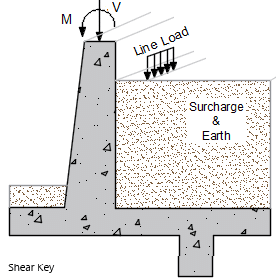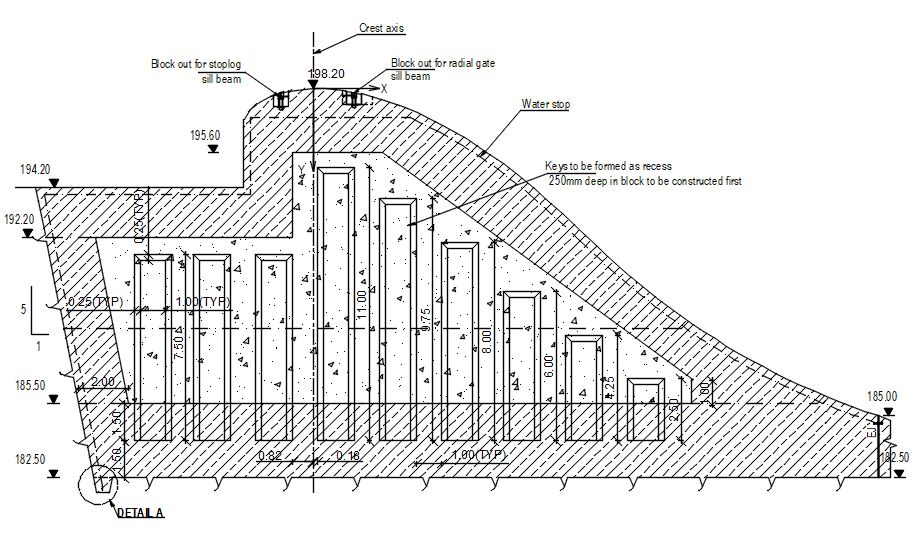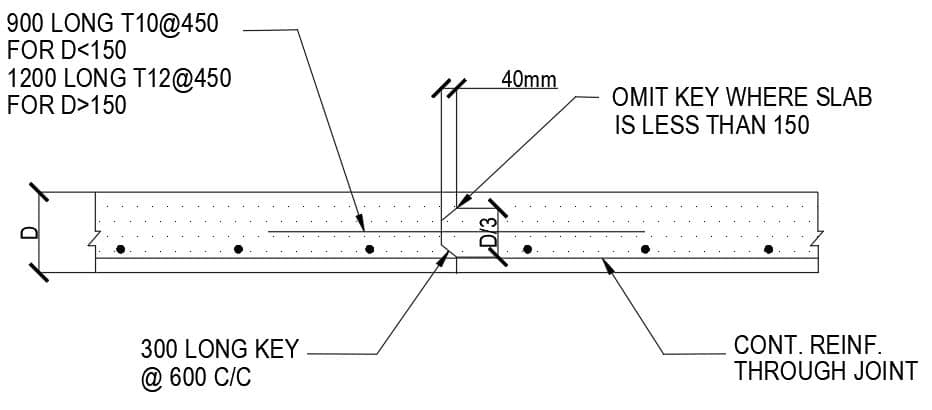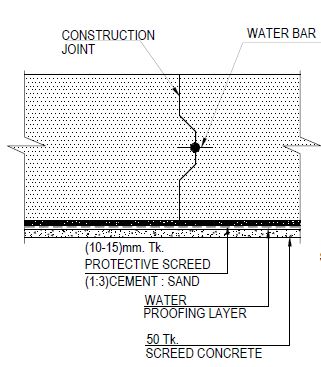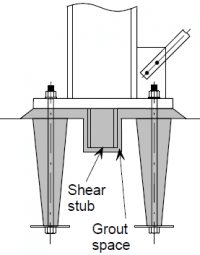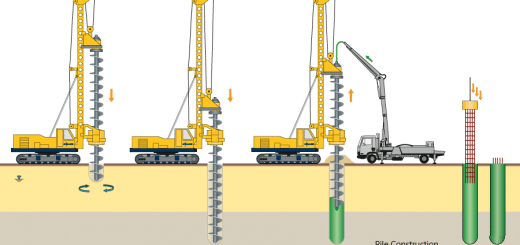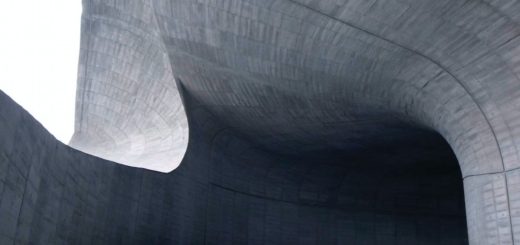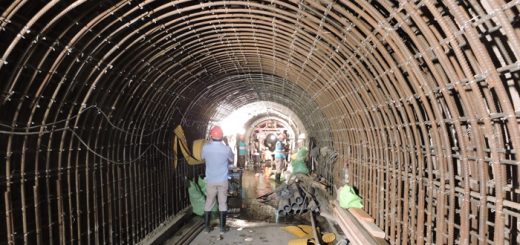Shear key [ Purpose, types, design, construction details]
The shear key is a part of the structural element mostly used to make the structure stable against the lateral loads. Depending on the type of construction and nature of the loading, the application of shear is different.
Mostly the shear keys are constructed between two structural elements. However, for structures like retaining walls, it is connected to the main structure but stability is provided by resting in the soil.
What is the purpose of a shear Key?
The key purpose of the shear key is to maintain the integrity of the structure. In general, we do not transfer the bending moment through the shear key though we allowed transferring the shear forces.
In other words, the shear force due to the lateral loads or due the applied loads are transferred between the structure by the shear key at the joint.
Classification of Shear Keys
They are classified based on the type of the structure, nature of construction, magnitude of the applied loads, etc.
Though design for the shape of the key is not done, the typical values specified in the detailing manuals could be used to finalize the dimension.
However, the special design shall be done when the applied loads are critical.
Based on the type of construction, applied loads, sequence of construction, etc. shall be considered when locating and classifying the shear keys.
The following occasion can be discussed in relation to shear keys.
- Retaining Walls (external)
- Basement walls, Retaining Walls (Internal)
- Contraction Joints in Gravity and Reinforced Concrete Structures
- Slabs
- Beams
- Raft Foundations
- Steel Column Base Connection
- Connection of Precast Elements
- Masonry Walls
Let’s discuss each type in detail.
Shear Key in Retaining Walls (External)
Lateral loads applied on the retaining wall is resited by the based friction and any projection from the base.
Up to a certain extent based can resist the later loads based on the friction between the concrete and the rock.
The article on retaining wall stability could be referred for more information on stability analysis.
Depending on the applied loads (active pressure and passive pressure) shear key need be design for bending and shear.
Basement Wall and Retaining Walls
Generally, we provide construction joints just above the base. However, we do not provide shear keys in thinner walls.
With the increase of the thickness of the wall, the lateral loads are increasing and also we providing the shear links to carry the shear forces.
A horizontal construction joint could be a good option as it is weak in shear resistance. Therefore, we need to provide a key to resist the lateral loads.
Generally, when the thickness of the wall beyond the 500mm could be considered to have a shear key in the construction joint. But there is not specific with to have a key.
Waterstops may be provided based on the water tightness requirements in the wall. The construction joint shall be roughened adequately to have adequate bonding.
Contraction Joints in Gravity and Reinforced Concrete Structures
Contraction joints are provided in many types of structures.
In this article, we are discussing the shear keys provided in contraction joints provided in large structures.
Further reading on construction joints could be done from the article Types of Concrete Joints.
There are several shear keys constructed on the wall.
As indicated in the above figure, there will be more keys that provide lateral stability through the joint in the contraction joint.
The force applied for each key will be less and there would be a failure due to the shear keys.
Shear Keys in Slabs
Shear keys are provided for the slab based on the loads applied and the span of the slab. If there is no larger span, we could avoid the key in the slab.
Further thinner slabs, it is very difficult to form a shear key. Therefore, most of the time, a key is not provided for slabs thickness around 150mm or less.
In addition, pockets in the shape of the shear key placed in the slab to form shear keys. They could be placed a spacing of 600mm. This spacing based on the engineer’s judgment made based on the slab span and applied loads.
Shear Key in Beams
It is not possible to construct a floor slab in a one pour due to the scale of the limitation of the resources, time taken to complete one pour, etc.
Therefore, we have to have two or more pours to complete the concreting of slabs.
The construction joint will be in the slab and beams. Shear keys need to provide in each beam and slab.
Beam shear keys are placed similar manner to the slabs.
However, additionally, most of the time, we place shear dowels in the beam construction joints.
The typical depth and dimensions of the key could be as indicated in the above figure. However, these values may be adjusted based on the other requirements if any.
The shear key shall be roughened adequately for better bonding of concrete in two pours.
Shear Keys in Raft Foundations/Mat Foundations
Usually, there are shear keys in the mat foundations due to the volume to be poured and to minimize the thermal effects.
There are typical dimensions for keys to provided to carry the shear forces in the foundations. Generally, we do not design the shear keys as the are very stiff and they can carry the applied loads.
The above figure indicates the type of shear key that could be placed in the raft foundations. Depending on the nature of the construction, waterstops are provided.
Waterstops could be placed at the bottom of the foundation or at the center of the foundation as indicated in the above figure. Mostly, the based water bars are placed when there are movement joints.
Steel Column Base Connection
Steel frames are subjected to lateral load due to the action of wind or as per the nature of loads applied to the structure.
Generally, amendments are placed in the column foundation to work as a shear key.
Dimensions of the embedment shall be based on the applied loads and as per the connection details.
Shear Keys in Connection of Precast Elements
Shear keys are placed in the precast elements make the transferring of the load consistently.
Generally, the shear key will be concrete mostly with grout to fill if correctly.
Shear Key in Masonry Walls
Shear keys are constructed in a masonry wall to resist the lateral loads applied externally and internally.
Projection from the wall makes the connection with the other walls.
There could be joints in the vertical and horizontal directions.

